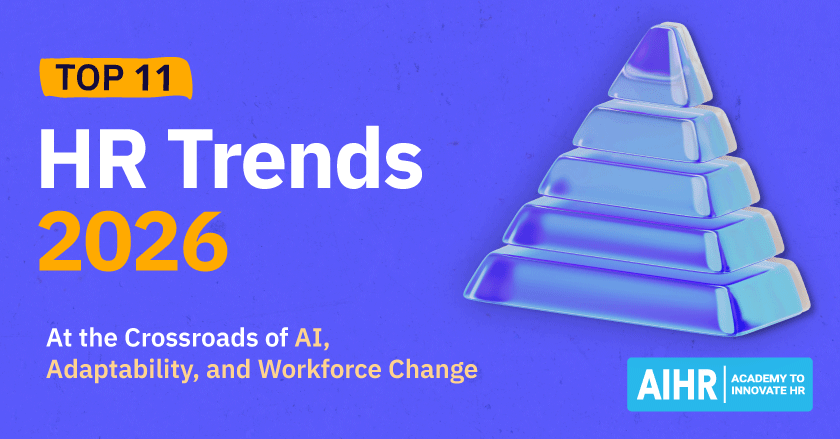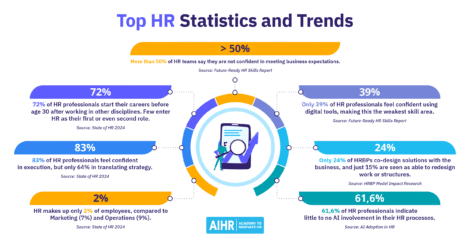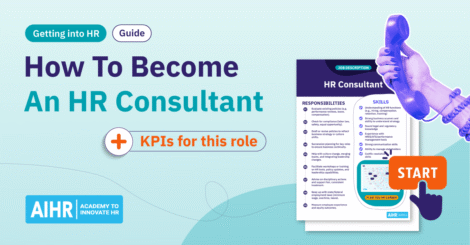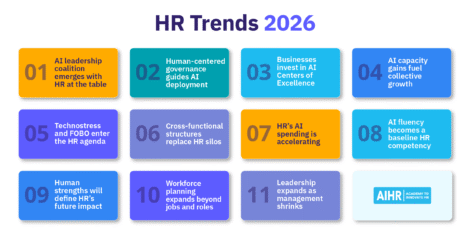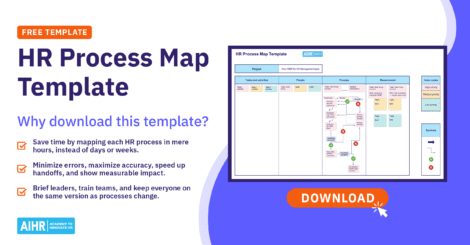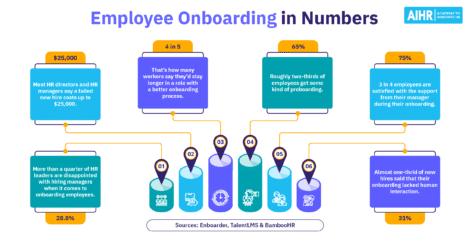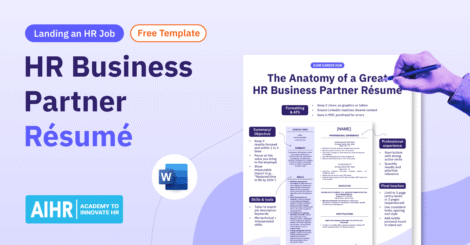Process mapping can help HR teams understand and optimize their key processes, save time, improve the employee experience, and support business success. A process map template is a valuable tool that can help you achieve these outcomes more quickly and efficiently by providing a clear, structured guide to what you should do, and why, how and when you should do it.
This article explores what a process map for HR contains, why it’s important, how it works and how you can use one to drive business success. It also provides process mapping steps HR should follow to ensure smooth HR operations, regardless of the process.
Contents
What is a process map for HR?
Why HR should use a process map
Key elements of a process map template for HR
Free process map template for HR
6 types of process maps and when to use them
8 process mapping steps HR should follow
How to measure your mapped processes
Key takeaways
- HR process maps standardize HR work, reduce errors, and make handoffs clearer across teams.
- A good process map template for HR covers structure, people, tasks and activities, process flow, and measurement.
- Map and validate the current state with stakeholders, then design and sign off on the future state with clear owners.
- Track KPIs against a defined baseline, review results quarterly, and adjust the process based on evidence.
What is a process map for HR?
A process map shows the steps, handoffs, and outcomes in any HR-managed process. It helps reduce errors, align teams, and standardize work to improve effectiveness and efficiency. Common formats include flowcharts (e.g., a hiring process flowchart), swimlanes (e.g., onboarding across departments), SIPOC diagrams (e.g., payroll compliance), and value stream maps (e.g., finding delays in hiring).
Sketching on a whiteboard works for quick brainstorming, and using a digital tool makes editing and sharing easier. As HR becomes more strategic, process mapping can improve candidate experience, drive better hiring, and build a stronger workforce aligned with business goals. It also supports HR transformation by flagging steps to remove or automate with software and AI.
Why HR should use a process map
Process maps document and standardize workflows, which is vital during staff changes. They also support compliance by enforcing consistent employment procedures, reducing legal risk and improving the candidate experience. For instance, Microsoft uses AI self-service agents to answer basic policy questions, speeding responses for staff and sparing HR repetitive queries.
Clear documentation makes it easier to assign tasks, increase accountability, and break down silos between different teams. Additionally, visual maps reveal bottlenecks, duplicate steps, and inefficiencies, so you can shorten cycle times (e.g., interviews and time to hire) and improve future processes.
Process maps also help new hires and stakeholders understand workflows, improving knowledge sharing and reducing handoff errors. They highlight where mistakes occur, making them useful in error-prone areas like payroll.
When not to map
Process mapping takes time, cross-functional input, and upkeep. In fast-changing environments affected by VUCA (volatility, uncertainty, complexity and ambiguity), maps can quickly become outdated. Standard templates also lack built-in performance monitoring and feedback loops, making it difficult to confirm whether your processes are working as intended.
On paper, process maps clarify responsibilities but don’t automatically assign formal process owners, which can dilute accountability. At the same time, a process map can create a false sense of control if teams don’t follow it and update it in practice.
Key elements of a process map template for HR
Here are the main elements of a process map template for HR:
- Structure: A title or project name, the scope of the process map, and what version it is. This helps ensure it’s focused and clear to all stakeholders. It also helps HR stay organized, as process maps are reworked and improved over time.
- Tasks and activities: Break the process into discrete tasks with short, action-based labels (e.g., “start hiring process” or “create contract”). You can also use a color code to denote priority (high, medium, low), so your team knows what to focus on first.
- People: List the specific roles (not names) responsible for each step or decision. Show who owns approvals, who executes tasks, and who provides inputs. Clear role mapping reduces handoff confusion, surfaces bottlenecks, and makes accountability visible.
- Process: Collate data on the process, including all inputs, outputs and potential bottlenecks. Use flowchart symbols (arrows, connectors, yes/no decisions) to help you visually map the process, making comprehensive tasks easier to understand.
- Measurement: A process map should also include links to SLAs (service level agreements) and KPIs (key performance indicators), which define performance standards, expectations and metrics. These provide a specific criteria for each step, ensuring clarity for all involved.
Learn how to map HR processes quickly and efficiently
To ensure quick yet efficient HR processes and process mapping, you must define scope and outcomes, involve the right stakeholders, assign ownership, align across teams, and review your processes and process maps regularly.
🎓 AIHR’s HR Generalist Certificate Program will help you:
✅ Learn how Human Resources processes keep your organization running
✅ Create end-to-end HR processes, from recruitment to employee engagement
✅ Take charge of decision-making processes you may be a part of
✅ Ensure process efficiency in all aspects of HR, from payroll to rewards
Free process map template for HR
AIHR has created a free, customizable process map template for HR to help you begin process mapping, and provide your team and key stakeholders with clear direction and updates. You can download it for free, and tailor it to best suit your organization’s specific needs, goals, and culture.
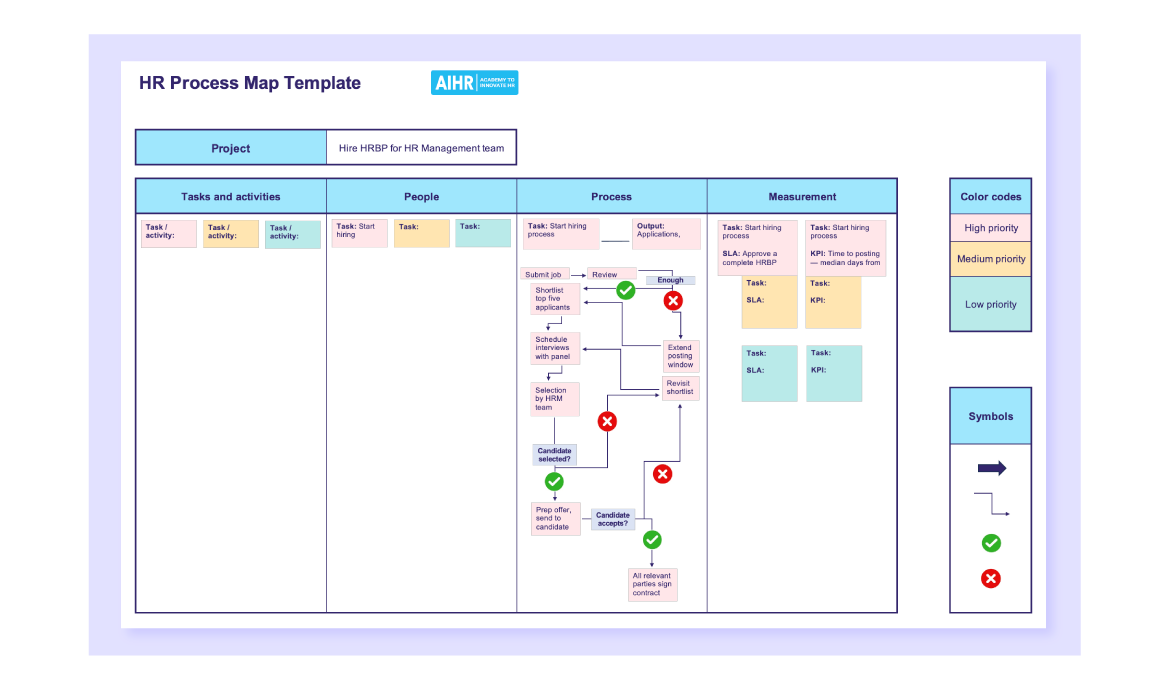
6 types of process maps and when to use them
Let’s explore some of the main types of business process map templates, what they’re used for, and how they can help.
1. SIPOC (suppliers, inputs, process, outputs, customers
This process map visualizes every step of a process, beginning with who supplies the project’s input and ending with who receives the final deliverables.
Use for: Cross-functional processes with mulitple handoffs and compliance touchpoints.
HR examples:
- Payroll runs that depend on HRIS updates, timekeeping, benefits deductions, and finance approvals
- Open enrollment
- Vendor onboarding.
Why it’s useful: This map helps frame who provides what, the key inputs, outputs and core HR processes involved, and who the customers are. For example, if each department’s manager provides time sheets, the company can make HSA elections for staff who opted for this benefit. This helps determine accurate pay for each employee, and a clear record of it for finance.
Deliverable: One-page SIPOC to align scope before you build the detailed map.
2. Swimlane process map
Also called a deployment map, a swimlane process map shows who’s responsible for what by putting each person or team in their own “lane” on the map, then plotting their specific tasks.
Use for: Onboarding and any workflow with clear role-based handoffs.
HR examples:
- Employee onboarding (HR, department manager, IT, payroll, and facilities)
- Leave of absence (the employee, HR, their manager, and the Benefits Coordinator).
Why it’s useful: Because the swimlane process map shows who does what, in what order, and where delays happen, it can help the entire organization understand the division of tasks and responsibilities. This then reduces any possible confusion over the who, what, why, when and how, and improves accountability.
Deliverable: Specific lanes for each person or department e.g.,HR/manager/IT/payroll), and clear steps and decisions in each lane.
3. Six Sigma process map (DMAIC-friendly)
The Six Sigma process map helps identify inefficiencies, create smoother workflows, and align processes with strategic business objectives. It integrates with the DMAIC methodology (Define, Measure, Analyze, Improve, and Control), which emphasizes using data to drive decisions and sustained quality improvement through commitment from all organizational levels.
Use for: Error-prone, high-risk HR processes that need defect reduction.
HR examples:
- I-9 completion and reverification
- Background check exceptions
- Payroll adjustments
- COBRA notices.
Why it’s useful: This process map highlights failure points, rework loops, and control checks, tying these to tangible metrics like error rate and cycle time. This enables you to monitor improvements more easily and thoroughly. Motorola, who created it, has reported significantly fewer production defects, while GE has reported savings of over $2 billion from implementing it.
Deliverable: A current-state map with data boxes (for example, defects and wait times), plus improved future-state.
4. Business process map
A business process map is a visual blueprint that shows the steps, roles, inputs and outputs, and performance measures of a process from start to finish. This helps teams standardize work, assign ownership, and improve results.
Use for: HR processes that affect other departments and need KPIs and owners.
HR examples:
- The performance review cycle (with links to compensation and finance)
- The process from job requisition to job offer (with links to budget and headcount).
Why it’s useful: It adds inputs and outputs, owners, SLAs, and metrics to a standard process map to enable leaders to govern and audit. It also offers a big-picture view of the process and shows how teams and/or roles interact.
Deliverable: A map and a side panel listing owners, SLAs (e.g., “approve in two business days”) and KPIs (e.g., time to hire or first-pay accuracy).
5. Value stream map (lightweight for HR)
A value stream map focuses on process improvement. It shows every step involved in a process and how the relevant people can provide value at each step.
Use for: Speed-sensitive processes where wait time hurts outcomes.
HR examples:
- Recruitment funnel (req approval → posting → screen → interview → offer → start)
- Ticketing for an HR help desk.
Why it’s useful: A value stream map helps expose queues, bottlenecks, and total lead time, guiding improvements that can significantly reduce time to hire or case resolution time.
Deliverable: Steps with process time vs. wait time, so you can tally the total lead time.
6. Decision tree map
A decision tree map helps weigh the outcomes of various actions based on their costs, benefits and probabilities. This provides organizations with the relevant information to guide their decision-making.
Use for: Policy-heavy choices with if/then logic.
HR examples:
- Leave eligibility (FMLA/ADA/state leave)
- Benefits enrollment rules
- Bonus eligibility.
Why it’s useful: Decision trees help turn complex policy into clear paths, and in doing so, minimizes the likelihood of inconsistent decisions.
Deliverable: A branching logic diagram that links each outcome to the next process step.
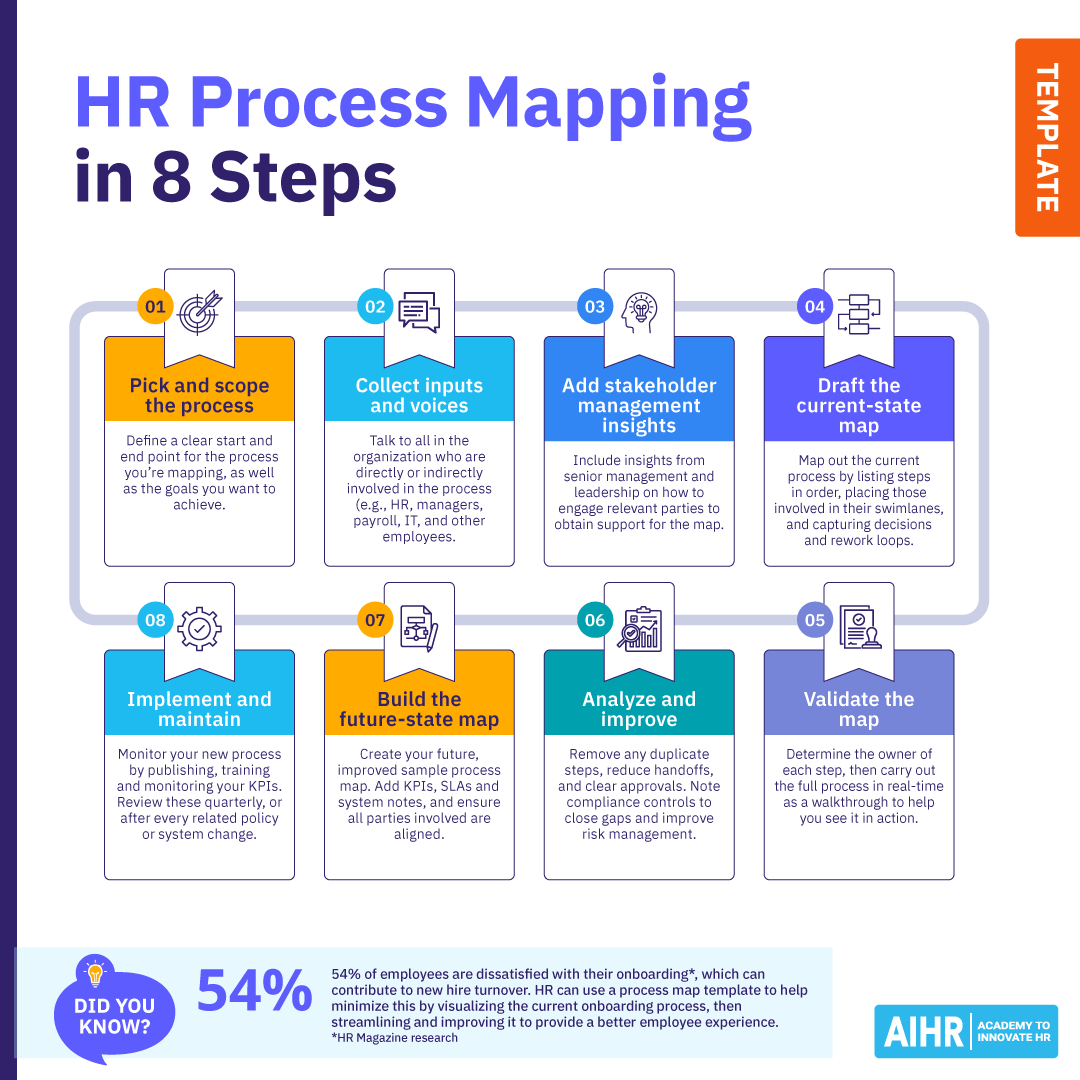
8 process mapping steps HR should follow
Below is an eight-step guide to process mapping for HR:
Step 1: Pick and scope the process
Define a clear start and end point for the process you’re mapping, as well as the key goals you want to achieve before going into further detail. For example, when Card Factory wanted to uncover inefficiencies, isolate process bottlenecks, and develop a market-ready Request for Proposal (RFP) for a new Human Capital Management (HCM) platform.
Don’t skip: Set clear, precise goals from the beginning to inform the development of the process.
Step 2: Collect inputs and voices
Talk to everyone in the organization who will be either directly or indirectly involved in the process, such as the HR team, managers, payroll, IT, and other employees. At the same time, gather information from relevant policies and forms that link to these in your process map template. This step provides clarity and helps align those involved in the process.
Don’t skip: A RACI-style check to confirm you’ve heard from every role that’s Responsible, Accountable, Consulted, and Informed.
Step 3: Add stakeholder management insights
Include insights from senior management and leadership on how to engage relevant parties to obtain support for the process map. A main challenge Card Factory faced was middle management resistance due to a gap between what they knew and the reality. Conducting walkthroughs of real-life processes helped demonstrate this,, resulting in full stakeholder buy-in.
Don’t skip: A live walkthrough with a middle management group to surface gaps between “what we think” and “what really happens”.
Step 4: Draft the current-state map
Map out the current process by listing steps in order, placing those involved in their swimlanes, and capturing decisions and rework loops. This helps you capture how work actually happens today (including steps, roles, handoffs, timings, and pain points), so you can set a baseline, spot bottlenecks and gaps, and prioritize improvements.
Don’t skip: Timing each step (including rough ranges) so you can see where delays and rework actually occur.
Step 5: Validate the map
Determine the owner of each step, then arry out the full process in real-time as a walkthrough to help you and other involved parties see it in action. Doing so will confirm whether the map matches reality by reviewing it with stakeholders and data, allowing you to fix errors, remove assumptions, and secure buy-in before changes or automation.
Don’t skip: Running the process end-to-end on a real case and collecting evidence (timestamps, screenshots, logs) to confirm accuracy.
Step 6: Analyze and improve
Remove any duplicate steps, reduce handoffs, and clear approvals, and note compliance controls to close gaps and improve HR risk management. As you learn more about the process in real-time and how it affects everyone involved, continue to make improvements. This will help keep the process accurate, efficient, and aligned with stakeholder needs.
Don’t skip: Compiling a quick wins list (e.g., after 30 to 60 days) with owners and dates before tackling bigger redesigns.
Step 7: Build the future-state map
Create your future, improved sample process map. Add KPIs, SLAs and system notes, and ensure all parties involved are aligned on changes and new owners. This helps you define the target way of working — documenting the improved flow with KPIs, SLAs, and system notes — and secure stakeholder alignment and clear ownership before rollout.
Don’t skip: A sign-off checkpoint where every new owner accepts accountability for their steps and KPIs.
Step 8: Implement and maintain
Continue to monitor your new process by publishing, training and monitoring your KPIs. Aim to review these quarterly, or after a related policy or system change. This way, you’ll be able to sustain performance by operationalizing the new process (i.e., publishing the map, training stakeholders, tracking KPIs), notice when things start to slip, and fix them promptly.
Don’t skip: A quarterly review on the calendar with published KPI results and action items tracked to closure.
How to measure your mapped processes
Mapping your processes is just one part of the equation. To maximize ROI on the time and effort you’ve put into process mapping, you must also find ways to measure your mapped processes efficiently. Here’s how:
Track key metrics
Pick a small set of metrics to show if the process is working, like time to hire, error rate, handoff count , compliance SLA, and eNPS. Define each metric clearly (what’s included, how it’s calculated, where its data comes from) and set targets and thresholds to guide everyone. Be sure to review these metrics regularly and tie them to actions when they fall outside target.
Set a baseline before mapping
Before you change anything, record how the process currently performs. Document scope, timeline and budget, then capture current values for your key metrics — this will be your baseline. It lets you compare pre- and post-change results, and prevents ‘improvement by opinion’. Share it with stakeholders to align on the starting point and what success entails.
Track improvements over time
After you make changes, measure the same KPIs against the baseline at regular intervals. Look for trends, not just one-off wins; sustained shorter time to hire or fewer defects matter more than a single good week. Visualize results to make gaps and gains obvious, and log which specific changes drove which outcomes. With this data, you can decide what to scale, fix, or retire.
Connect maps to dashboards and automation initiatives
Turn your process map into a live dashboard by placing KPIs at the steps where they matter. Set alerts for threshold breaches, so teams can act fast. Use the map to pinpoint manual, repetitive work and link the steps to automation pilots that remove bottlenecks. As automations go live, update the map and dashboard so your documentation, metrics, and tools stay in sync.
To sum up
A clear, well-maintained process map turns HR from reactive to reliable, allowing you cut errors, shorten cycle times, and give employees a smoother experience from day one. Since something like dissatisfaction with onboarding, for instance, can increase new hire turnover, mapping isn’t a nice-to-have but a fast way to fix the basics, align teams, and prove impact.
Use AIHR’s process map template to pick a process, capture the current state, validate it with real data, and design the future state. Then, publish, train, and monitor your KPIs, reviewing quarterly or after any policy or system change. Be sure to do this consistently to ensure your process map keeps work simple, compliant, and scalable as the business grows.


